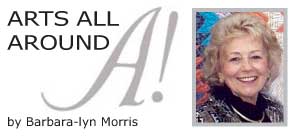

Andrea Palladio (1508-1580), commonly referred to as the father of neoclassicism in architecture, is acknowledged to be among the most influential architects in Western history. No two places in the world have more reason to celebrate the quincentenary of Palladio's birth than the region of Veneto, Italy and the Commonwealth of Virginia.
Palladio worked primarily in and around Venice and in Vicenza, a city about 40 miles from Venice. He designed homes, churches and municipal buildings, as well as streets, bridges and squares. Two hundred years later, Thomas Jefferson discovered Palladio's principles. He considered them ideal for the plantation estates of the new country and for the capitol of Virginia and the University of Virginia. This anniversary year is the ideal time to rediscover the origins of classical design elements that we have come to take for granted.
These elements include porticoes, pediments, covered walkways, domes, columns with capitals, arches, and rectangles. Adjectives that describe Palladio's style include "classical," "symmetrical," "balanced," "harmonious," "grand," "proportional," and "ideal." Being responsive to the landscape is essential -- the result being a "living picture," according to Dr. Charles Brownell, a Palladian scholar at Virginia Commonwealth University.
Neoclassical architecture is so familiar to us that it appears to have grown somehow organically from American soil, especially in the South. In fact, it comes directly from The Four Books of Architecture by Palladio. First published in 1570 and again in 1738, the illustrated text was released in a new English translation in 1997. It continues to be a required tome in any architect's library. In a lecture sponsored by the Virginia Center for Architecture, Dr. Brownell said that this treatise is "brilliant. It teaches with few words and excellent illustrations."
Palladio's four "books" cover the following:
---building guidelines as manifested in the five orders of classical columns -- Tuscan, Doric, Ionic, Corinthian, and Composite;
--- elements of grand private homes in town and country;
--- recommendations for classical public architecture for streets, piazzas, and buildings;
--- and the particulars of Roman temples, especially the Pantheon in Rome.
Palladio developed his detailed directions and illustrations from five trips he made to Rome. There, he carefully studied, measured, and documented the ancient Roman ruins. From those experiences, he produced what Jefferson would call "the Bible" for architecture. From it came "pattern books" for any and everything classical. Mount Vernon, Monticello, Mount Airy, and Gunston Hall are major Palladian grand residences in Virginia. The State Capitol of Virginia is quintessentially Palladian.
Venice and the Veneto region are replete with Palladian designs. The major ones include:
--- the great Christ the Redeemer (Redentore) Church, commissioned by the Venetian Senate to give thanks for the end of a plague that decimated one third of the population of Venice in just three years during the 1570s, and the church of San Giorgio Maggiore at the entrance to the Venice harbor;
--- numerous villas outside Venice, including Villa Cornaro which is now owned by a couple from Atlanta and documented in Palladian Days: Finding a New Life in a Venetian Country House by Sally Gable with Carl I. Gable (Knopf 2005), and Villa Rotonda, one of the major inspirations for Thomas Jefferson's Monticello;
--- many town buildings in Venice and Vicenza, where he was born and raised.
Aside from Roman columns and capitals, the most duplicated architectural element is the Palladian window. A three-part design, it has a central opening with arched top that is flanked by rectangular windows. The most famous Palladian window in America is the one at Mount Vernon. Contemporary architects continue to adapt Palladian style when they include some version of the Palladian window, expansive front porches, arched entry ways, and symmetrical floor plans. Simplicity and harmonious proportion are the key principles.
The Virginia Center for Architecture (2501 Monument Avenue, Richmond) features a multifaceted Palladian exhibit through October 5 titled "Italian Dressing: Palladio and American Classicism." Especially appealing are the inclusion of contemporary adaptations of Palladian features which illustrate the "perennial appeal of the classical tradition" and of artworks of Palladian buildings by a wide array of artists.
For other celebrations of Palladio at 500, check the websites of the Institute of Classical Architecture and Classical America (www.classicist.org) and the Center for Palladian Studies in America (www.palladiancenter.org). Virginia Commonwealth University in Richmond is sponsoring an architecture symposium, Friday, November 14, called "Palladianism and Its Alternatives." For information, email Cynthia Myron <myroncj@vcu.edu>.